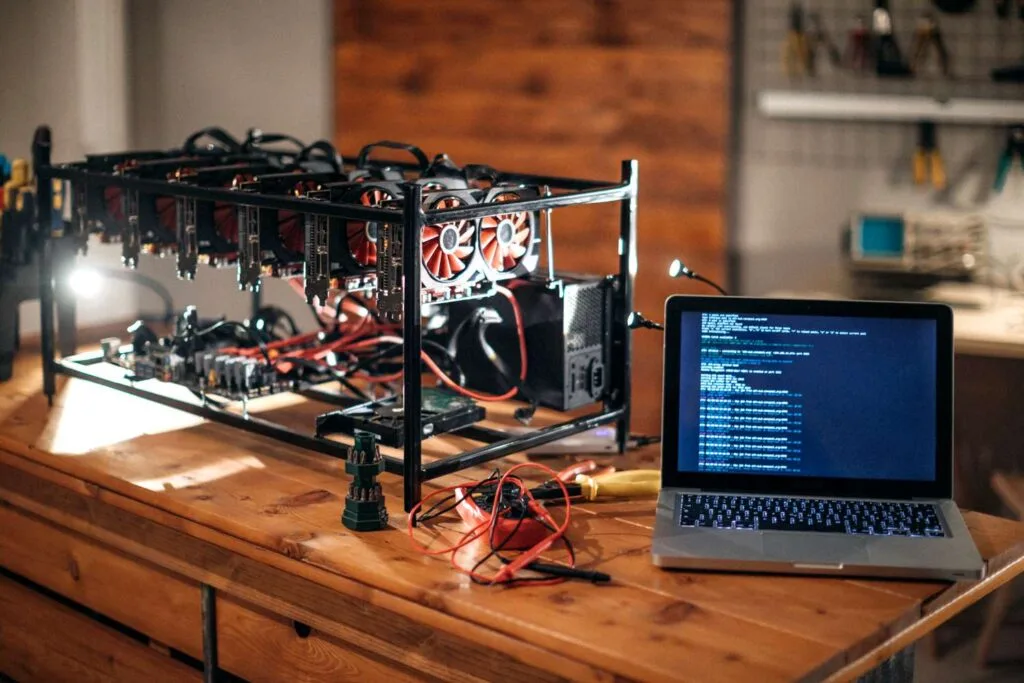A crypto mining machine, often called a mining rig, is a specialized computer designed to validate and process transactions on a cryptocurrency network. Through a process called mining, these machines solve complex mathematical problems that help secure the blockchain, a decentralized ledger used by cryptocurrencies like Bitcoin, Ethereum, and others. In return for their computational work, miners earn cryptocurrency as a reward, making mining a potentially lucrative activity.
Here’s a closer look at how crypto mining machines work:
1. Understanding Proof of Work (PoW)
Most mining machines work within the Proof of Work (PoW) consensus model. PoW requires miners to solve complex mathematical problems to validate transactions and add them to the blockchain. This process ensures the network remains secure and decentralized, as no single entity controls the blockchain. However, it also requires significant computational power, which is where mining machines come into play.
2. Mining Hardware Components
Mining machines consist of specialized hardware components optimized for crypto mining. The two main types of mining hardware are:
- ASICs (Application-Specific Integrated Circuits): ASIC miners are custom-built for mining specific cryptocurrencies. For instance, Bitcoin ASIC miners are highly efficient at solving Bitcoin’s SHA-256 hashing algorithm, making them far more efficient and faster than general-purpose hardware like GPUs.
- GPUs (Graphics Processing Units): While less efficient than ASICs, GPUs are versatile and can mine different types of cryptocurrencies. They are commonly used in mining Ethereum and other altcoins, which are more GPU-friendly.
ASICs are preferred for large-scale mining operations due to their efficiency, while GPUs remain popular for mining a variety of coins and smaller operations.
3. How the Mining Process Works
Mining involves the following steps:
- Receiving Transaction Data: Mining machines receive data on pending transactions from the network. These transactions are then grouped into a block.
- Hashing the Block: Miners generate a unique “hash” for the block, which acts as a digital fingerprint. To be valid, the hash must meet specific conditions set by the network, which requires miners to find a specific value.
- Solving the Mathematical Problem: The mining machine tries different combinations, or “nonces,” to find a valid hash. This process requires a lot of computational power, as miners have to test millions of possible nonces per second.
- Proof of Solution: When a miner successfully finds a valid hash, they broadcast it to the network. The network verifies the solution, and once confirmed, the block is added to the blockchain.
- Rewarding the Miner: In return for their work, the miner receives a cryptocurrency reward, such as Bitcoin, and any transaction fees associated with the transactions within the block.
4. Cooling and Power Requirements
Crypto mining machines generate a significant amount of heat and require high power levels to maintain operations. Mining farms use cooling systems to prevent overheating, and energy-efficient setups are essential for profitability, as electricity is a major cost in mining.
5. Difficulty Adjustments
To ensure blocks are mined at a consistent rate, networks like Bitcoin adjust the mining difficulty every few weeks. This process regulates the mining ecosystem, ensuring no single entity can dominate, maintaining decentralization.
Summary
Crypto mining machines play a critical role in the functioning of blockchain networks. By solving complex mathematical problems, they validate and secure transactions while earning rewards for their work. Mining requires substantial computational power, electricity, and cooling systems, making it a resource-intensive process. However, as crypto continues to grow, mining remains essential to maintaining network integrity, security, and decentralization.


More Stories
Data-Driven Disruption: Bangalore’s Impact on Industries
Gemini Introduces Gems on Mobile App Along with a Redesigned Home Page
The Future of Cybersecurity: Trends and Innovations by thejavasea.me